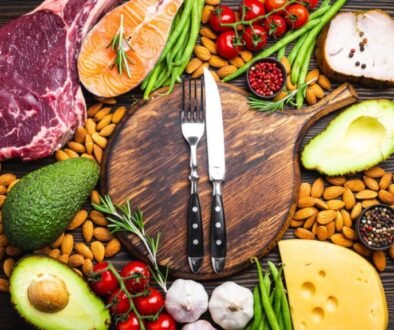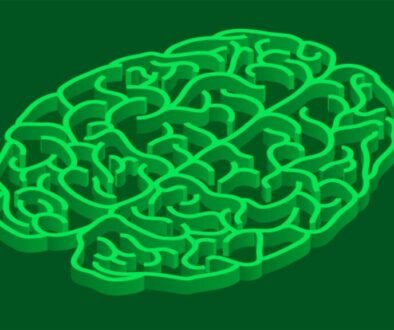An ketogenic diet could improve the response to pancreatic cancer therapy
[ad_1]
UC San Francisco UC scientists have discovered a way to get rid of pancreatic cancer in mice by putting them on a regime rich in fat or ketogenic and giving them treatment against cancer.
Cancer therapy blocks fat metabolism, which is the only source of fuel in cancer as long as mice remain in the ketogenic diet, and tumors cease to develop.
This is the foundation of a new way of treating cancer with a diet and personalized therapies. »»
The team made the discovery, which appeared on August 14 NatureWhile they were trying to understand how the body manages to survive the fat during fasting.
“Our results have led us directly to the biology of one of the deadliest cancers, pancreatic cancer,” said Davide Ruggero, PHD, research professor of Goldberg-Benioff and research professor of American Cancer Society in the departments of urology and cellular molecular pharmacology at the UCSF and the main author of the newspaper.
The Ruggero team first discovered how a protein known as the Euccaryotal Translation Initiation Factor (EIF4E) modifies the body's metabolism to move to fat consumption during fasting. The same switch also occurs, thanks to EIF4E, when an animal follows an ketogenic diet.
They found that a new cancer medication called EFT508, currently in clinical trials, blocks EIF4E and the ketogenic route, preventing the body from metabolizing fats. When scientists combined the drug with a ketogenic diet in an animal pancreatic cancer model, hungry cancer cells.
“Our results open up a point of vulnerability that we can deal with with a clinical inhibitor that we already know safe in humans,” said Ruggero. “We now have firm evidence in a way in which the diet could be used alongside preexisting therapies of cancer to precisely eliminate cancer.”
Burn different fuels in the cell of the cell
Humans can survive for weeks without food, in part because the body burns the stored fats.
During fasting, the liver converts fat into ketone body to use in place of glucose, the normal energy source of the body. The Ruggero team found that the EIF4E in the liver became more active, even if the liver interrupted its other metabolic activity, suggesting that this factor was involved in the manufacture of ketone bodies, a process called ketogenesis.
“Fasting has been part of various cultural and religious practices for centuries, often supposed to promote health,” said Haojun Yang, PHD, post-doctoral researcher at the Ruggero laboratory and the first author of the study. “Our observation according to which fasting reshaped the expression of genes provides a potential biological explanation of these advantages.”
By following the way in which different metabolic pathways changed during fasting, scientists discovered that EIF4E was activated by the presence of free fatty acids, which are released by fat cells at the start of fasting, so that the body has something to consume.
“The metabolite that the body uses to make energy is also used as a signal molecule during fasting,” said Ruggero. “For a biochemist, seeing a metabolite acting as a signal was the coolest thing.”
These same changes in the production of the body of the liver – ketone from burning fats, as well as an increase in the EIF4E activity – also occurred when laboratory animals have received a ketogenic diet composed mainly of fat.
This is where the bulb started.
“Once we have seen how the way works, we saw the opportunity to intervene,” said Ruggero.
Achilles pancreatic cancer heel
Scientists first treated pancreatic cancer with cancer drug called EFT508 which deactivates EIF4E, intended to block tumor growth. However, pancreatic tumors have continued to grow, supported by other fuel sources such as glucose and carbohydrates.
Knowing that pancreatic cancer can thrive on fat and that EIF4E is more active during fat combusting, scientists first placed animals at a ketogenic diet, forcing tumors to consume the fat alone, then put them on the cancer drug. In this context, the drug cut the only subsistence of cancer cells – and tumors have decreased.
Ruggero, with Kevan Shokat, PHD, UCSF teacher of cellular and molecular pharmacology, developed EFT508 in the 2010s, and he showed a certain promise in clinical trials. But now there is a much more powerful way to use it.
“The field has struggled to link the diet firmly to cancer and cancer treatments,” said Ruggero. “But to really connect these things in a productive way, you need to know the mechanism.”
Various food drugs will be necessary to treat more forms of cancer.
“We expect most cancers to have other vulnerabilities,” said Ruggero. “This is the foundation of a new way of treating cancer with a diet and personalized therapies.”
Authors: Other authors of the UCSF are Vincenzo Andrea Zingaro, James Lincoff, Harrison Tom, Satoshi Oikawa, Juan A. Osse-Prieto, Quinn Edmondson, Ian Seipiple, Alma L. Burlingame and Michael Grabe. For all authors, see the article.
Funding: The work was partially funded by the NIH (subsidies R35CA242986, DK125281 and R01GM137109).
Disclosure: Davide Ruggero is a shareholder of Therapeutics, Inc., and a member of his scientific advisory council. Other authors do not declare any competing interest.
[ad_2]




